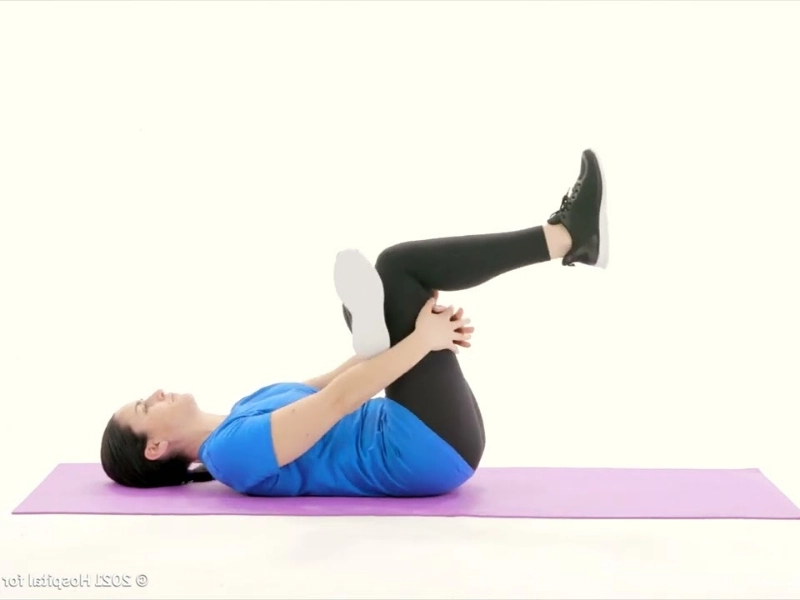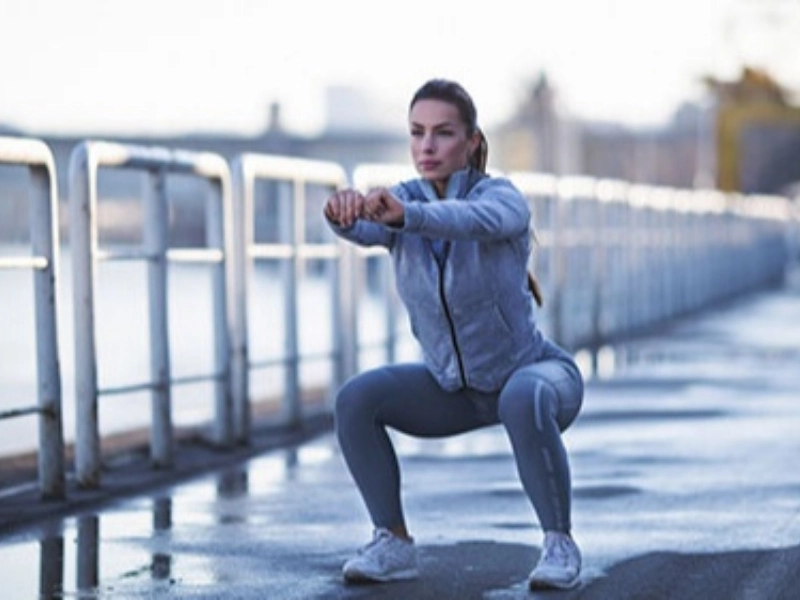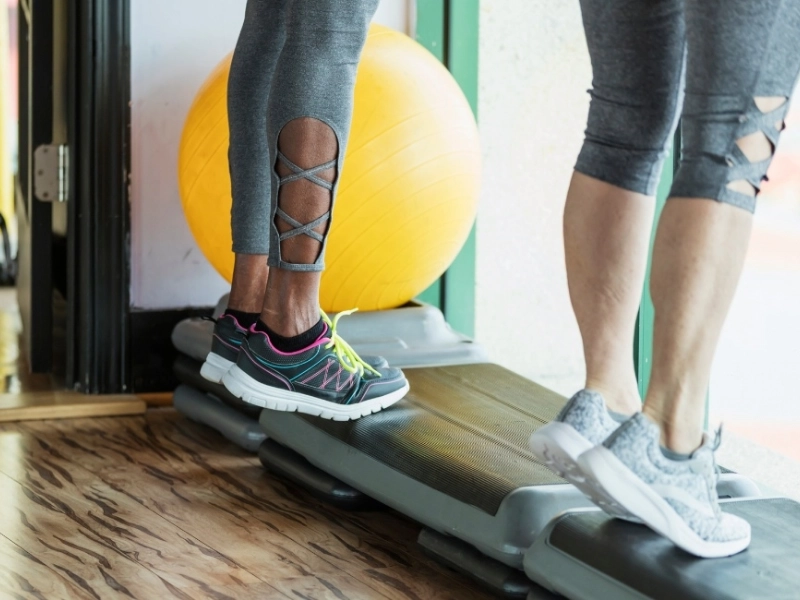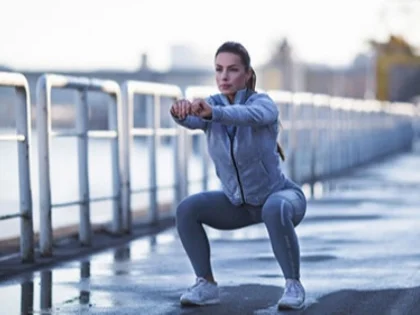How Can I Make My Knees Stronger?
Many have had injuries that have left their knees weak and sore, or they suffer from knee pain. The good news is that you can lower your risk of injury in the future by strengthening the muscles surrounding your knee joint with targeted exercises. Use a wall or chair behind you when performing squats if your knees are weak so you can sit down if you lose your balance. As your knees strengthen, progress to complete squats from quarter or half squats.
Extending

Squats
 All of the main knee muscles, including the front (quadriceps) and rear (hamstrings), are strengthened by squats, which are an excellent kind of exercise. They also burn calories and improve core stability.
Place your feet wider than shoulder-width apart and push your chest forward to execute a squat. Squat down with your knees stacked over your heels and your chest raised until your thighs are parallel to the floor or at least in line with your ankles. Get back up onto your feet by pushing through your heels.
The passive structures of a joint, such as the ligaments, tendons, and cartilage, will strengthen and adapt with each activity, reducing the risk of injury to the knee. But before performing more difficult weighted squats, you should see a doctor if squats hurt your knees. This could be a sign of poor form or an underlying problem. You can learn how to do squats correctly from a trainer. To begin, consider altering your workout routine and using a chair or wall.
All of the main knee muscles, including the front (quadriceps) and rear (hamstrings), are strengthened by squats, which are an excellent kind of exercise. They also burn calories and improve core stability.
Place your feet wider than shoulder-width apart and push your chest forward to execute a squat. Squat down with your knees stacked over your heels and your chest raised until your thighs are parallel to the floor or at least in line with your ankles. Get back up onto your feet by pushing through your heels.
The passive structures of a joint, such as the ligaments, tendons, and cartilage, will strengthen and adapt with each activity, reducing the risk of injury to the knee. But before performing more difficult weighted squats, you should see a doctor if squats hurt your knees. This could be a sign of poor form or an underlying problem. You can learn how to do squats correctly from a trainer. To begin, consider altering your workout routine and using a chair or wall.
Raising Calf
 Although they may not appear to be the most strenuous leg exercise, calf raises are incredibly beneficial for the knees and have a powerful physical impact. "The muscles of the calves support the knee in both movement and position, and strengthening them helps alleviate pressure on the knee," Russolillo explains.
Flex your calves by lifting yourself up onto your toes while standing with your feet hip-width apart on a level surface. Once your heels are below a step or platform, halt and slowly raise yourself back up to the starting position. By grasping something to help you stay balanced and maintain good form, such as a chair, wall, bench, bar, railing, or countertop edge, you can make the exercise more difficult.
Try single-leg calf lifts to intensify this exercise. By holding a pair of dumbbells or kettlebells in your hands, you can also add weight. [1]
Although they may not appear to be the most strenuous leg exercise, calf raises are incredibly beneficial for the knees and have a powerful physical impact. "The muscles of the calves support the knee in both movement and position, and strengthening them helps alleviate pressure on the knee," Russolillo explains.
Flex your calves by lifting yourself up onto your toes while standing with your feet hip-width apart on a level surface. Once your heels are below a step or platform, halt and slowly raise yourself back up to the starting position. By grasping something to help you stay balanced and maintain good form, such as a chair, wall, bench, bar, railing, or countertop edge, you can make the exercise more difficult.
Try single-leg calf lifts to intensify this exercise. By holding a pair of dumbbells or kettlebells in your hands, you can also add weight. [1]
Climbing Stairs
 One of the best exercises for people who want to maintain strong knees is climbing stairs. It's a useful exercise that resembles daily tasks and can help you maintain the strength of your knees even after retirement.
In addition, stair climbing is low-impact, which means that it won't strain your knees as much as high-intensity interval training or jogging. For people who have knee discomfort or other knee issues, this is a great choice.
Step one in stair climbing is to place your right foot on top of the first step and your feet parallel to the stairs. Next, raise your left foot and swiftly lower your right foot back down. Continue in this manner until the entire staircase has been climbed.
You might try increasing the number of flights or stairs each time to make this exercise more difficult. Don't forget to utilize the "talk test" to determine your intensity. If you can't talk without getting out of breath, your fitness level is moderate, and you should increase the intensity.
One of the best exercises for people who want to maintain strong knees is climbing stairs. It's a useful exercise that resembles daily tasks and can help you maintain the strength of your knees even after retirement.
In addition, stair climbing is low-impact, which means that it won't strain your knees as much as high-intensity interval training or jogging. For people who have knee discomfort or other knee issues, this is a great choice.
Step one in stair climbing is to place your right foot on top of the first step and your feet parallel to the stairs. Next, raise your left foot and swiftly lower your right foot back down. Continue in this manner until the entire staircase has been climbed.
You might try increasing the number of flights or stairs each time to make this exercise more difficult. Don't forget to utilize the "talk test" to determine your intensity. If you can't talk without getting out of breath, your fitness level is moderate, and you should increase the intensity.









